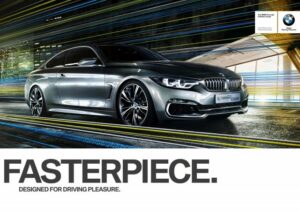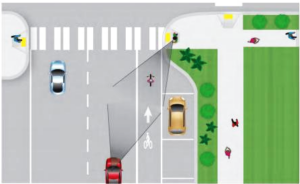What should be the virtue of living in a walkable or bikeable location has been partly offset by the excesses of our car culture.
One elemental thread of the meaning of “communication” is the companion idea of “transportation.” For most of human history a person connected with others using the media of the air and their feet, a horse, or a cart. While we have obviously enlarged our transport options, it is ironic that dependence on the original equipment natural to bipeds carries increased risks. Being hit by a car has dramatically risen in the last decade.
Put most starkly, we are increasingly killing each other with our bloated automobiles, sending over 100,000 pedestrians to emergency rooms in recent years. And they are the lucky ones. 2009 marked a low point of pedestrian deaths at around 4000. But in 2022 the rate climbed to 7,500. In the United States the greatest likelihood of being killed by a car is in Pompano Beach Florida and Victorville California, both modest sized towns, but typical in the U.S. of the sprawl that has turned streets into daunting multi-lane roads.
This rise in death or injury is also attributed to the fact that Americans are driving bigger and heavier cars. Trucks and SUVs may have marginally better sight lines, but what one wag has described as the standard “suburban assault vehicle” is not very nimble, and more lethal if they hit  someone. Drivers also seem less careful, some pathetically trying to emulate the driving shown in advertising that flaunts the dubious virtues of speed. Add in the distractions and inattention brought on by phones, drugs and alcohol, and there is an increasing the likelihood that a mature driver will have a good chance of causing a pedestrian’s crippling injury or death. Drive long enough, and even the best drivers will have some unsettling close calls.
someone. Drivers also seem less careful, some pathetically trying to emulate the driving shown in advertising that flaunts the dubious virtues of speed. Add in the distractions and inattention brought on by phones, drugs and alcohol, and there is an increasing the likelihood that a mature driver will have a good chance of causing a pedestrian’s crippling injury or death. Drive long enough, and even the best drivers will have some unsettling close calls.
More younger Americans want to live in cities, escaping suburban homes that required a car to get anywhere. But what should be the virtue of living in a walkable or bikeable  location has been offset by the excess traffic created by our car culture. In my walkable town of 4000 there are 22 crosswalks in one three-quarter mile section of the main street. Anyone speeding down this road of homes, two schools and shops is going to encounter pedestrians trying to cross it. My state’s law requires a driver to stop if someone is standing next to a crosswalk. But as a daily walker, I would estimate that half bother to yield. Without my caution, I would have been someone’s hood ornament long ago. And helping a child cross the street in the morning demands special care, usually requiring a parent or crossing guard to successfully traverse the 35-foot space.
location has been offset by the excess traffic created by our car culture. In my walkable town of 4000 there are 22 crosswalks in one three-quarter mile section of the main street. Anyone speeding down this road of homes, two schools and shops is going to encounter pedestrians trying to cross it. My state’s law requires a driver to stop if someone is standing next to a crosswalk. But as a daily walker, I would estimate that half bother to yield. Without my caution, I would have been someone’s hood ornament long ago. And helping a child cross the street in the morning demands special care, usually requiring a parent or crossing guard to successfully traverse the 35-foot space.

All towns should require sidewalks so that pedestrians are not forced onto roadways or wet shoulders. I have seen many students walking to my own campus in neighboring Ewing, New Jersey who are required to wade through wet grass along a string of front yards along a busy four lane highway. Sidewalks have long been absent in several locations. By contrast, the best pedestrian-friendly towns find ways to calm traffic and use “neckdowns” that narrow a street at an intersection. The resulting reduced lanes and prominent curb make walkers more visible.
I once served on a Planning Board in a mostly suburban town split by a busy multi-lane highway. But I was never successful in making pleas for sidewalks and a possible pedestrian bridge next to the local grade school. The Board did backflips to add horse paths throughout the area; sidewalks, not so much.
![]()

